Economy

China Dominates Global Steel Production in 2018
Written by Peter Wright
December 22, 2018
Editor’s note: Steel Market Update is sharing the following Premium content with all its readers in this issue. For more information on how to upgrade to a Premium-level subscription, email info@SteelMarketUpdate.com.
In three months through November year over year, China’s steel production grew 18 times faster than the rest of the world. (Not a typo!)
Global steel production in November was at an annual rate of 1.783 billion metric tons. Capacity is calculated to be 2.4 billion metric tons and capacity utilization in November was 75.0 percent, according to the latest Steel Market Update analysis of World Steel Association data. In three months through November, China grew by 14.6 percent year over year as the rest of the world grew by 0.8 percent. In 2018, China is increasing its share of global steel production, which in November was at 52.2 percent.
Figure 1 shows annualized monthly production on a three-month moving average (3MMA) basis and capacity utilization since January 2000. May through November were the first months for the annualized production rate to exceed 1.8 billion metric tons. On a tons-per-day basis, production in November was 4.954 million, down from an all-time high in September of 5.042 million metric tons.
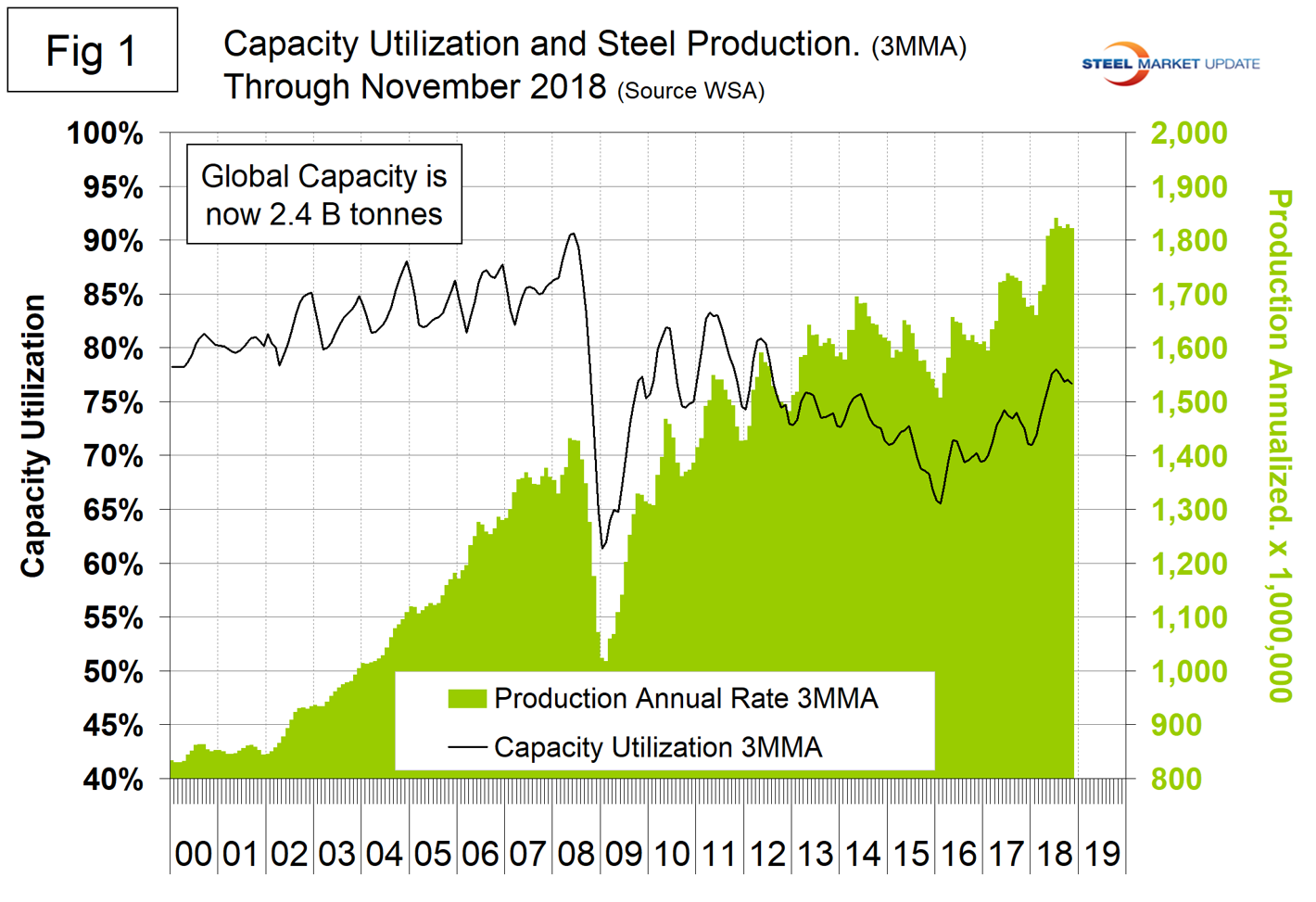
On average, global production on a tons-per-day basis peaked in the early summer in the years 2010 through 2016, but this year and last year the second half downtrend was delayed until November. Figure 2 shows the average tons per day of production for each month since 2008. On average, November declined by 1.86 percent. This year, November declined by 1.28 percent.
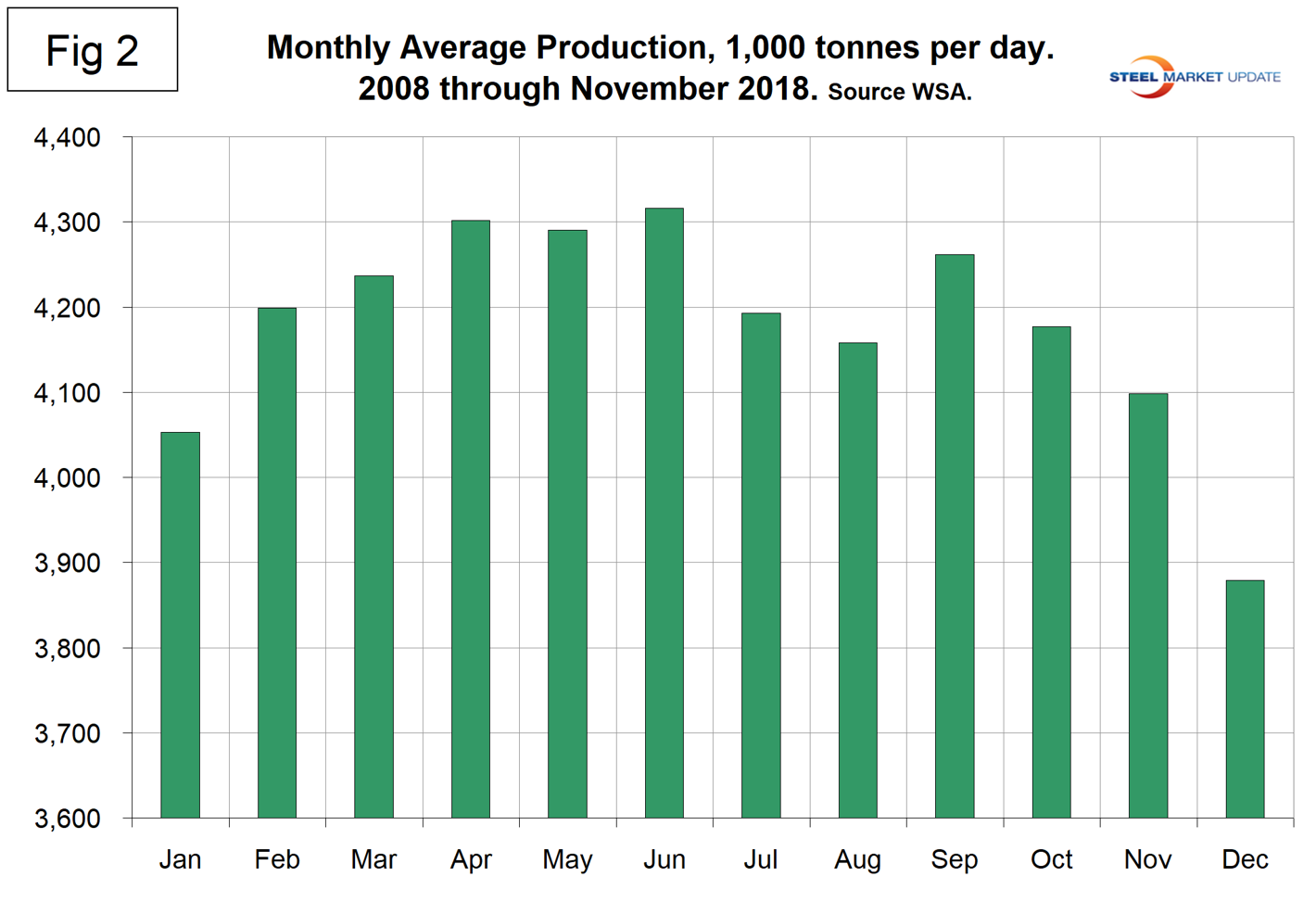
Figure 3 shows the year-over-year growth rate of global production on a 3MMA basis since January 2005. Growth in three months through November was 7.7 percent. Growth has exceeded 5 percent in every month since April 2018.
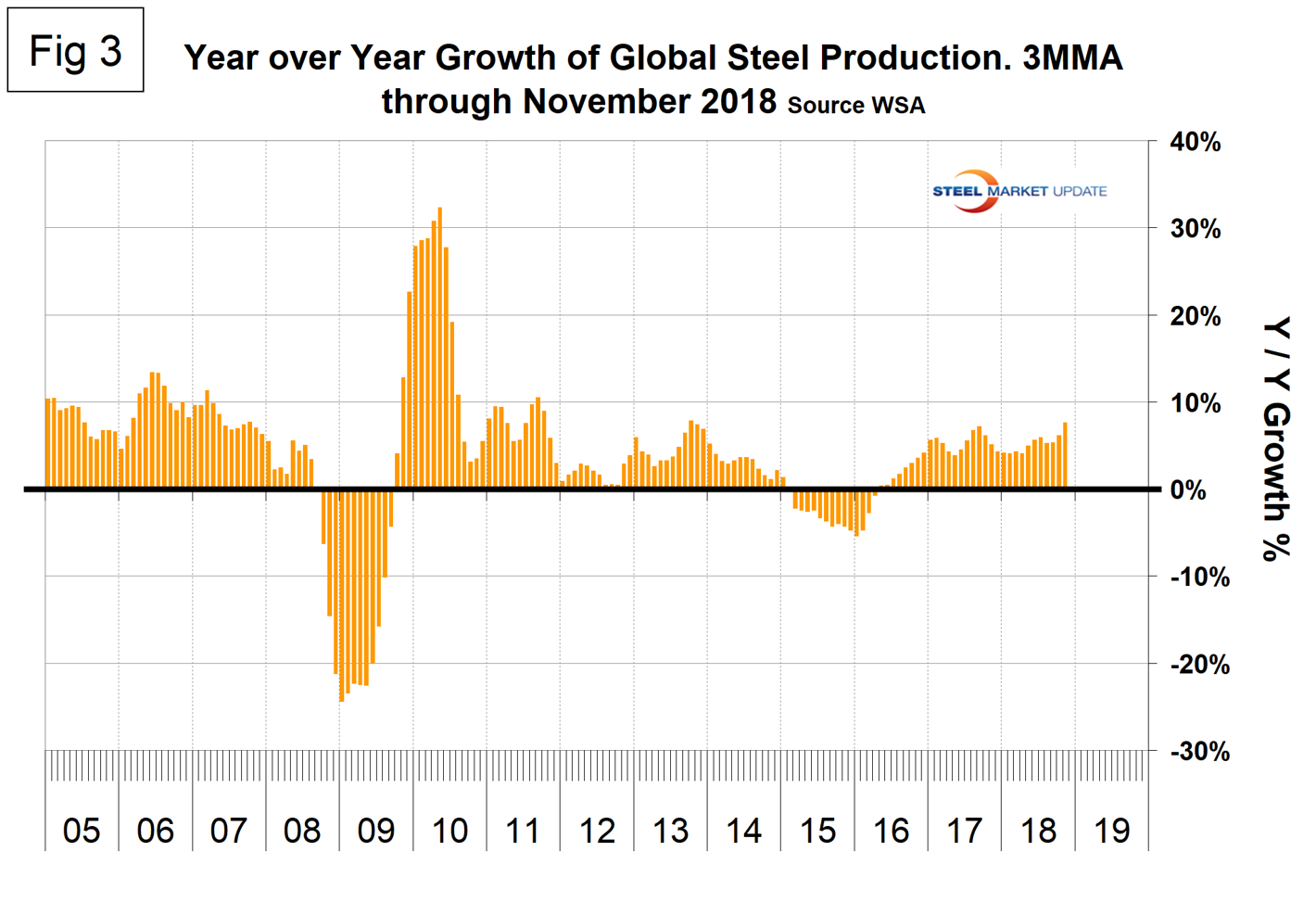
Table 1 shows global production broken down into regions, the production of the top 10 nations in the single month of November, and their share of the global total. It also shows the latest three months and 12 months of production through November with year-over-year growth rates for each period. Regions are shown in white font and individual nations in beige. The world overall had positive growth of 7.7 percent in three months and 5.6 percent in 12 months through November. When the three-month growth rate exceeds the 12-month growth rate, as it did each month June through November, we interpret this to be a sign of positive momentum. These were the first months of positive momentum since October last year. On the same basis in November China grew by 14.6 percent and 8.9 percent. The European Union, Other Europe and the CIS all had negative growth in three months through November year-over-year. The EU was the only region to have negative growth in 12 months year-over-year. Table 1 shows that North America was up by 5.6 percent in three months. Within North America the U.S. was up by 10.4 percent, Canada was down by 7.3 percent and Mexico was down by 4.1 percent. (Canada and Mexico are not shown in Table 1.)
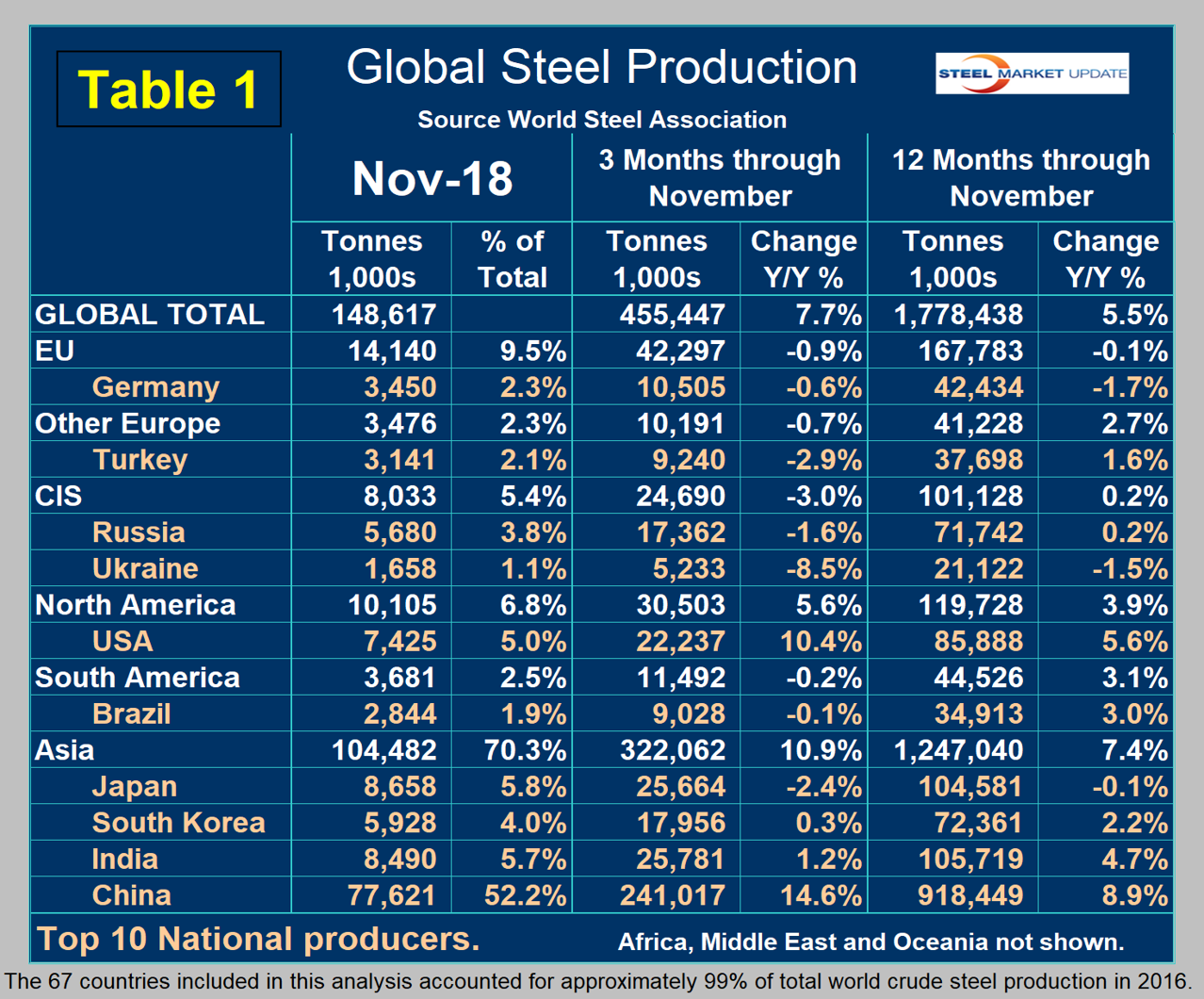
In the 12 months of 2017, 115.3 million metric tons were produced in NAFTA of which 70.8 percent was produced in the U.S., 11.9 percent in Canada and 17.3 percent in Mexico.
Figure 4 shows China’s production since 2005 and Figure 5 shows the year-over-year growth. China is increasingly dominating the global steel market and is approaching an annual rate of one billion tons of crude production. The reason China’s growth was so extreme in three months through November year-over-year is that in November 2017 steel production was down by 4 percent from October. This year was down by only 1 percent. The WSA is forecasting a deceleration in China’s steel production growth in 2019. The chairman of WSA’s economics committee stated recently that China is expected to experience zero growth in 2019, down from 6 percent this year. This is partly a result of trade tensions with the U.S., he reported.
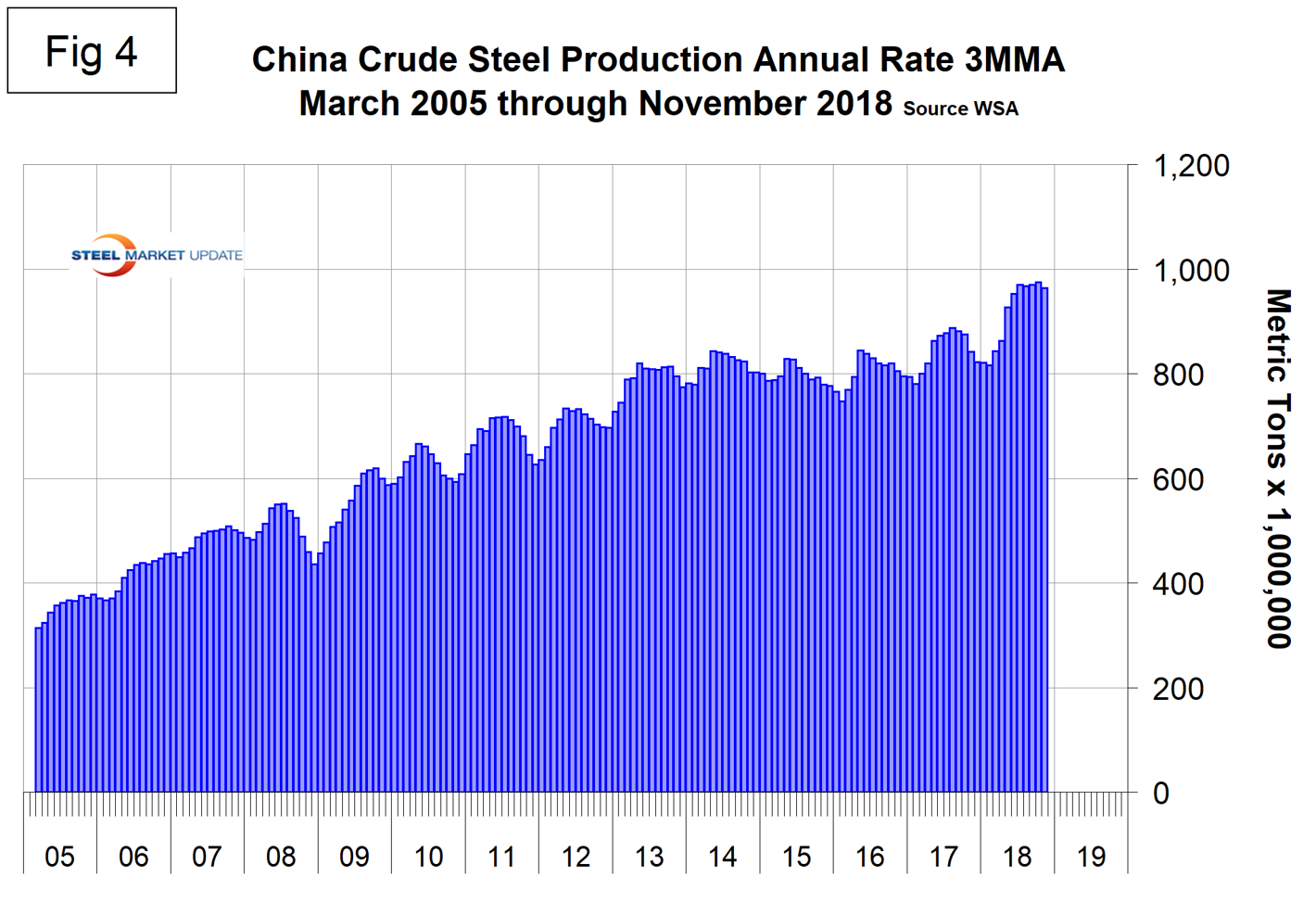
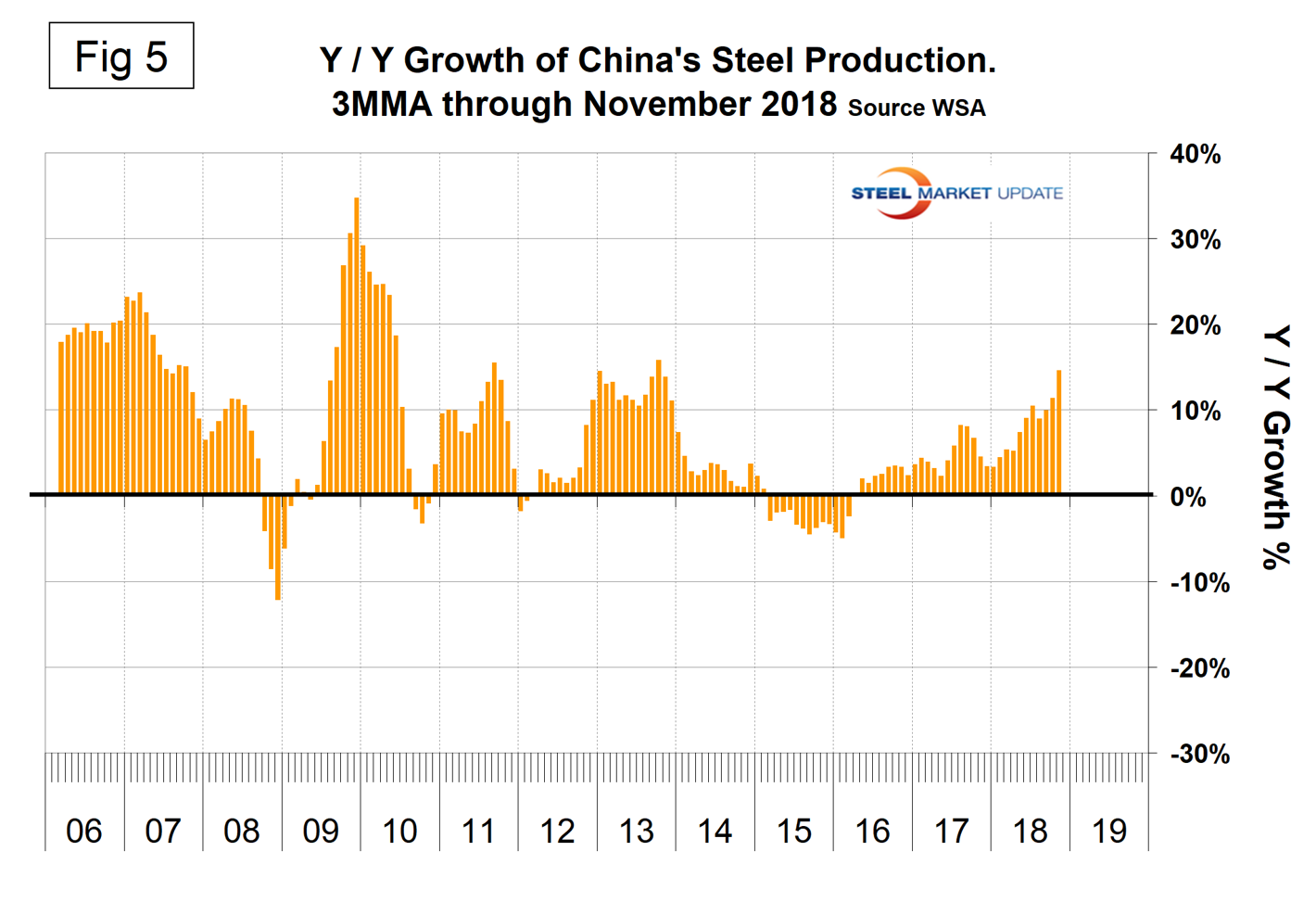
The November WSA Short Range Outlook (SRO) for apparent steel consumption in 2018 and 2019 is shown by region in Figure 6. The WSA forecasts global steel demand will reach 1,657.9 million metric tons in 2018, an increase of 3.9 percent over 2017. In 2019, it is forecast that global steel demand will grow by 1.4 percent to reach 1,681.2 million tons. The next forecast will be released in April 2019. (Note, the essence of this piece is crude steel production, therefore the numbers are greater than for steel consumption which relates to rolled products.)
“The outlook for steel demand in the U.S. remains robust on the back of the strong economic fundamentals,” commented the WSA official.
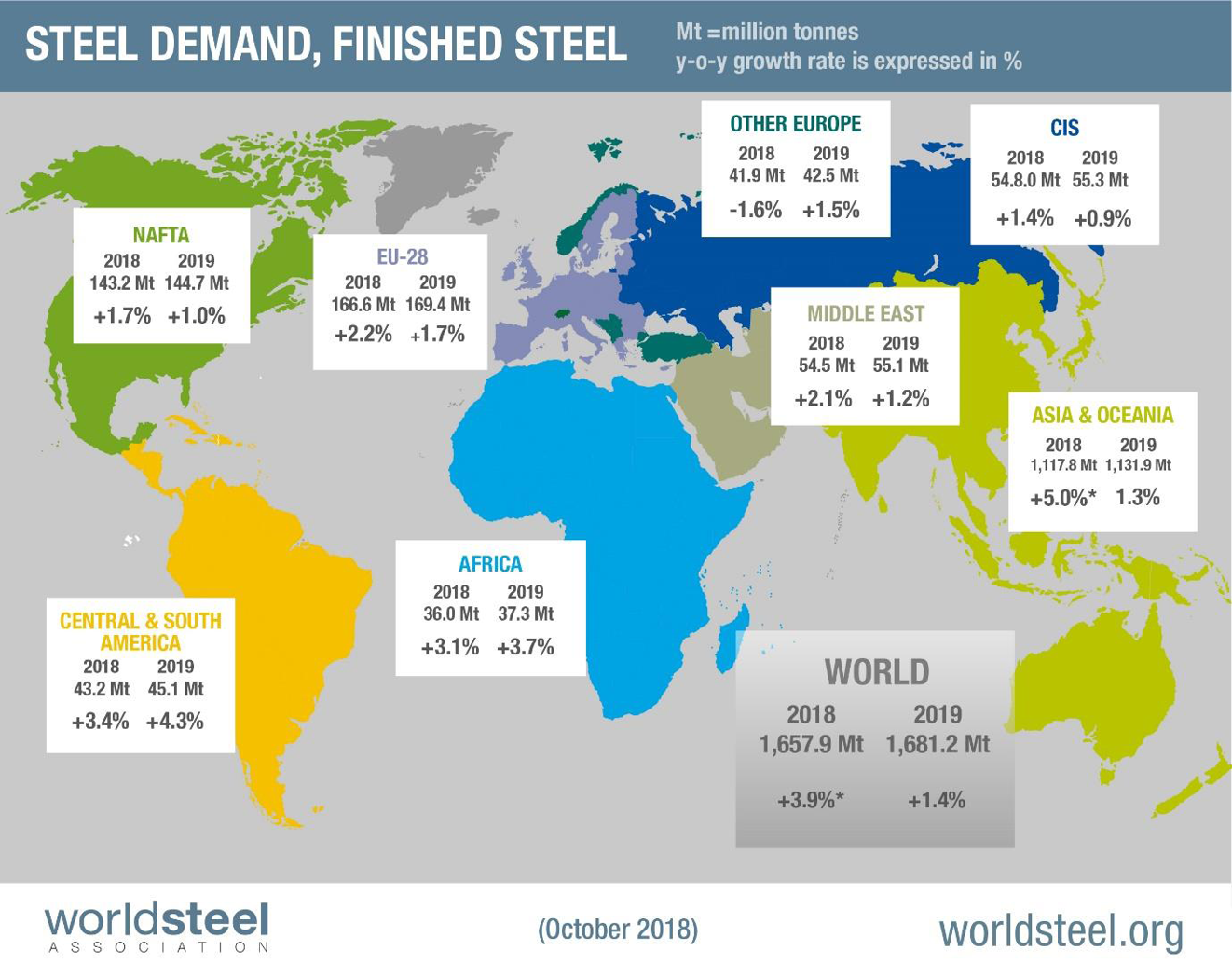
SMU Comment: We really can’t overstate how surprised and concerned we are about the growth rate of China’s steel production, which is vastly outpacing the rest of the world. All we see in the press are platitudes about how this is about to change, but month after month it gets worse. Remarks from the World Steel Association reported in this piece are typical. New plants are coming on stream in China and almost all of these are BOF-based, according to the August report by the OECD Steel Committee.
This analysis is based on data made public monthly by the World Steel Association. The WSA is one of the largest industry associations in the world. Members represent approximately 85 percent of the world’s steel production, including over 160 steel producers, national and regional steel industry associations, and steel research institutes.

Peter Wright
Read more from Peter WrightLatest in Economy

ISM: Manufacturing expansion loses steam after two months of growth
US manufacturing activity slowed in March after two straight months of expansion, according to supply executives contributing to the Institute for Supply Management (ISM)’s latest report.

Chicago Business Barometer rose to 16-month high in March
The Chicago Business Barometer increased for the third-consecutive month in March. Despite this, it still reflects contracting business conditions, as it has since December 2023.

Durable goods orders rise again in February
Transportation equipment led the increase, rising 1.5% to $98.3 billion.

Consumer confidence falls for fourth consecutive month
People remain concerned about inflation, trade policies, and tariffs.

Housing starts ticked up in February
Single-family starts last month hit a rate of 1.10 million, a month-over-month increase of 11.4%, census data shows.
